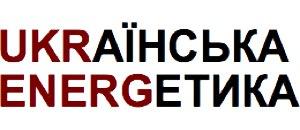“Green tariffs” and the load on the electricity market
Development of the renewable energy market is today’s stable trend which will define the direction of global energy development in the coming decades. At the same time, renewable energy experiences the fastest growth in EU states with high level of wellbeing, where the society is prepared to support this sector not only ideologically but also economically, by paying tariffs. While in the beginning, the degree of government support and implementation of various stimulating economic mechanisms (in particular, “green” tariffs) was high, today we see the declining trend in this regard. It can be explained by the effect of two major factors: on the one hand, a gradual increase of public discontent with higher electricity tariffs (in Germany, Spain and countries of Eastern Europe), and on the other hand, rapid cheapening of renewable energy technologies.
In Ukraine, the existing “green” tariff mechanism and the obligatory buyout of the entire electricity output produced from renewable energy sources is legislatively embedded. And even though the Law of Ukraine on the Electricity Market stipulates a schedule for the gradual lowering of tariffs for various types of renewable energy sources depending on their commissioning term, the country is already facing two serious imbalances caused by rapid development of renewable energy: financial (coverage of “green” energy procurement costs) and technical (power system balancing).
Today, this is a serious challenge to the country’s leadership, especially considering the forecasted increase of renewable energy’s installed capacity in 2020 from today’s 5.8 GW to almost 8 GW, which according to estimates by the Ministry of Energy and Environmental Protection will entail the increase in costs of covering the “green” tariff from approximately UAH 28 billion in 2019 to UAH 45 billion in 2020. Consequently, it is expected that the next year, the deficit of funds required to pay renewable electricity generating companies for their electricity output may reach UAH 13-14 billion. So right now, it’s just the time to answer honestly the question: “Is energy for the economy and the society, or it is the other way round?”
It goes without saying that we need to find the ways of ensuring Ukraine’s long-term “energy transition”, especially considering the low effectiveness and the degree of wear of infrastructure generating energy from conventional sources, first of all, thermal power generation. At the same time, we need to take into account economic realities and facilitate this transition in not only environmentally but also economically friendly way.
Obviously, the government must not suddenly and unilaterally change renewable energy’s operating conditions. It would produce reputational risks for the country, lower our credit and investment ratings, and create tension in the relationships with international partners and investors. However, what we definitely need right now is an open, constructive dialogue between the government and market players and investors to find an acceptable compromise as regards the market and economic conditions for operation of “green” energy.
Bohdan Serebrennikov
Manager on consultancy and analytical services




